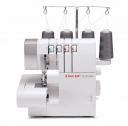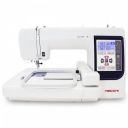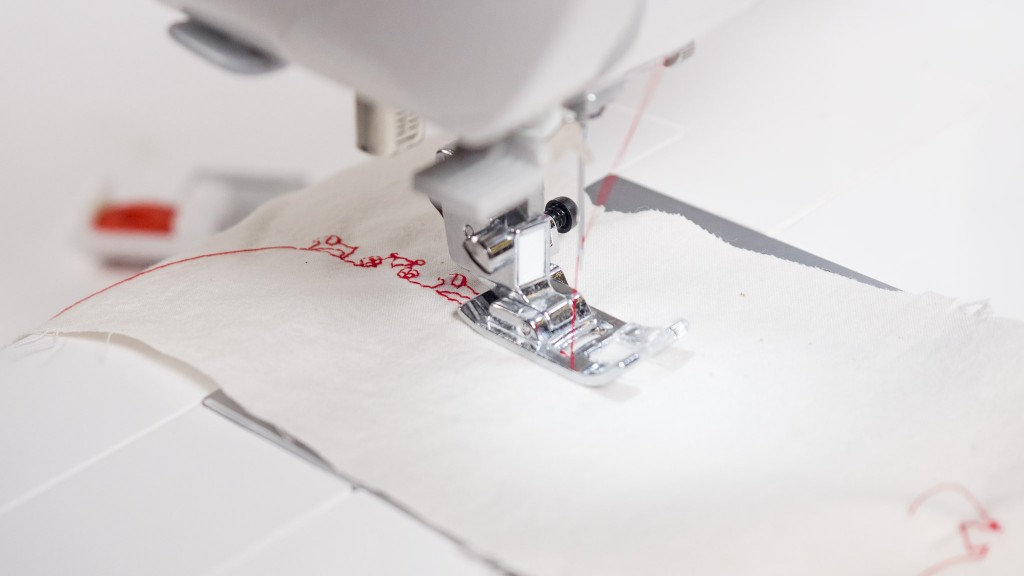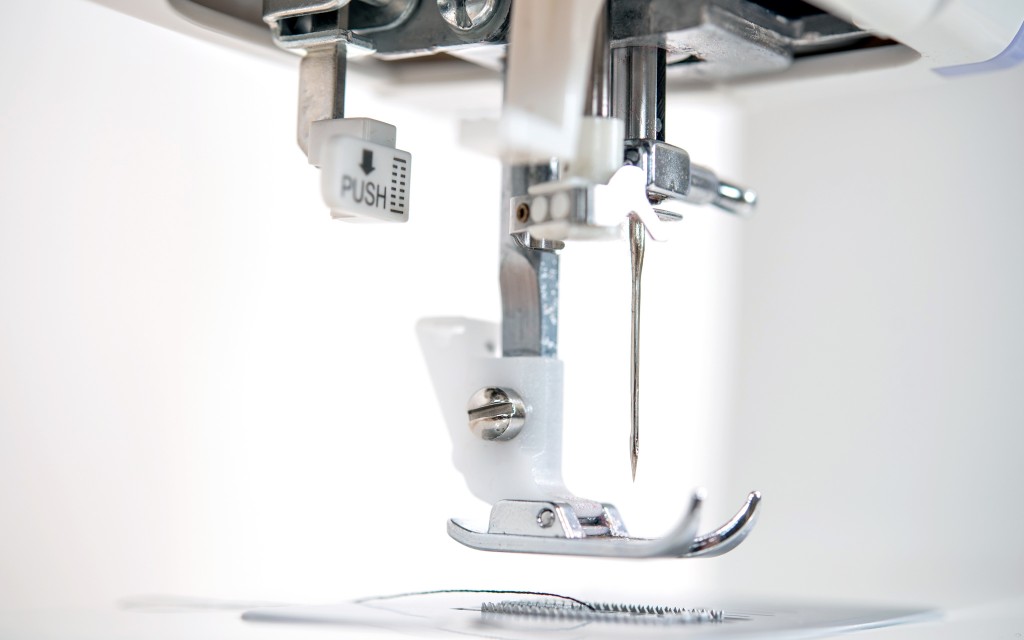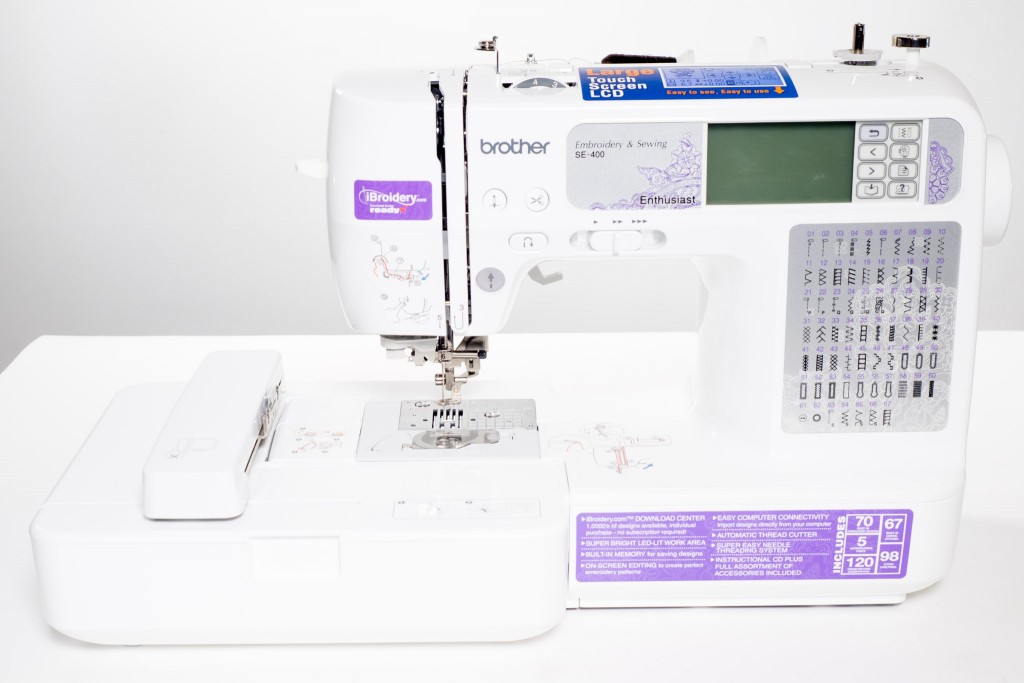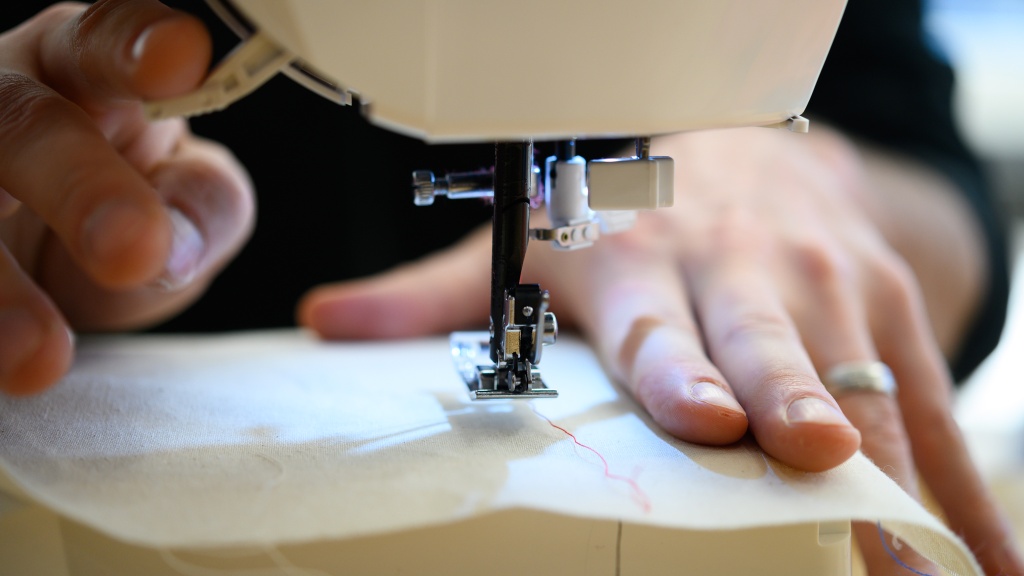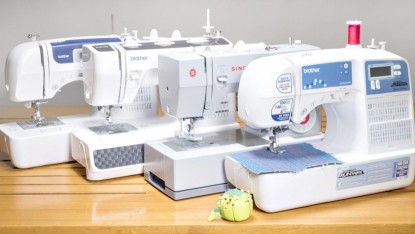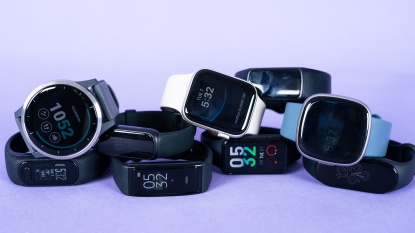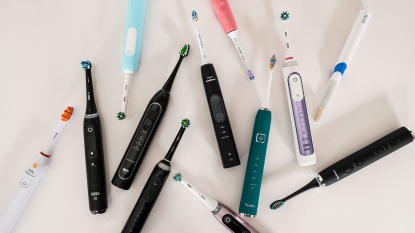How do you know which sewing machine is the perfect fit for you? The technology behind these machines has undergone a dramatic evolution in the past couple of hundred years, with many different variations sprouting from the original concept. Whether you are an avid seamstress or tailor, a hobbyist who sews regularly, a quilter, or a weekend warrior merely looking to patch up some holes, there is a sewing machine that is the perfect fit for you.
Keep reading to find out why you may need a sewing machine and the different types of machines available; then, look at our step-by-step guide to help you select the machine that is the perfect fit for you. Finally, for an in-depth comparison of some of the top sewing machines on the market, take a peek at our detailed sewing machine review.
Why Buy a Sewing Machine?
The first documented instance of one of these machines was a little over 200 years ago. Because there were so many inventors trying to get patents at the same time in the 1850s, they created what was known as the Sewing Machine War, with multiple companies and individuals suing and countersuing over intellectual property infringement. Luckily, the majority of these contested patents have expired, and after many technological advancements and improvements, we now have the sewing machines of today.
It doesn't take long to realize that machine sewing is exponentially faster than sewing by hand, with much smaller and more precise stitches. They produce stronger and more durable stitches with more consistency and variety than even the best hand-sewer. However, these machines do have some limitations and can be a significant monetary and space investment. If you are thinking of purchasing one just to darn some socks or mend some pants, then you may be better off purchasing a sewing kit and becoming proficient at that. Regardless, becoming proficient at hand sewing is a great skill to have and will help you be better at machine sewing, as it is necessary to finish almost every project with some hand sewing.
How Do These Even Work?
Whether computerized or mechanical, most modern machines have identical sewing mechanisms. The upper spool of thread is wound through the machine's components, then through the needle. A second smaller spool of thread, referred to as the bobbin, is installed below the needle in the bottom part of the machine. The loop-taker, or shuttle, catches the upper thread after the needle pierces the fabric, then weaves it with the lower thread to create a stitch, such as a lockstitch.
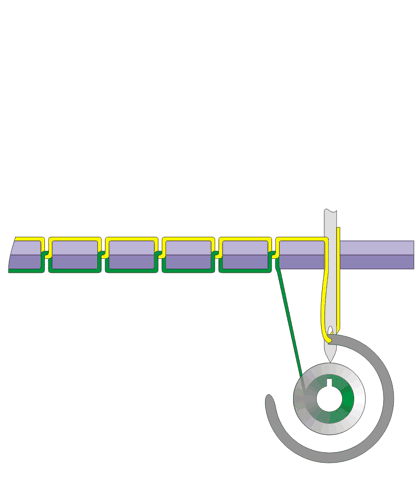
The presser foot provides pressure to keep the fabric in place while sewing and the feed-dogs advance the fabric a certain amount per stitch, keeping your stitching even and consistent. More complex and sophisticated machines will have mechanisms allowing them to do decorative stitches or buttonholes, but all sewing machines operate off this same basic principle.
Types of Sewing Machines
As sewing machine technology has become more innovative, it has been applied in many different ways, spawning the creation of machines for both general and specialized uses. The first step in determining which sewing machine is the best fit for you is to decide what you are trying to sew. Do you want a general, all-around workhorse that will be acceptable for most commonly-found fabrics? Or would you prefer a specialized, niche machine with a set purpose in mind?
All-Around Sewing Machines
These machines come in two types, detailed below.
Mechanical
Computerized
Higher-end computerized machines may even have an embroidery foot that can be attached, converting them to an embroidery machine and allowing you to create complex designs on your project. These machines will typically be the most versatile and enable you to use your own designs or designs downloaded from the internet for your embroidery. On the whole, computerized machines are a little pricier but are a great choice for a more experienced user or for a beginner who is confident they will be sewing frequently.
Overlock/Serger Machines
Embroidery Machines
Heavy-Duty/Commercial/Industrial
Portable/Handheld Machines
Portable or handheld machines are much smaller and more maneuverable. While these can often be attractively priced, they can also be much more challenging to use. Additionally, a lower-quality machine can cause hours of frustration.
Now that you have a better idea about which types of machines exist, choosing a new one comes down to your experience level and what type of sewing projects you are planning on making. Many of you looking at this review may already be experienced sewers, while others may be total novices, leading us to the first step in our guide.
Starting Out? New to the Textile Arts?
Bobbins, presser feet types, needle and thread types, straight stitch, backstitching — feeling lost? Sewing can seem like a complicated and expensive craft for a beginner, and the more experienced sewer will feel right at home among these terms, along with all of the other sewing-related jargon. We feel confident that an intermediate or advanced user could make an amazing number of beautiful projects with any of the machines that we looked at, but some of our novice readers may have sticker shock at the prices of the higher-end machines we reviewed, and then feel like they're drowning in a sea of features and functions that they don't really need when starting out.
While all of this may seem incredibly overwhelming, please don't panic. We had both complete novices and experts test each of the machines in our review. We gained significant insight into which machines would be great for the aspiring seamstress or tailor and which are better suited for the sewing aficionado. A few of the models that we looked at would be fantastic entry-level machines, and all of the machines had some similar features that were deemed a must-have.
Sewing as a craft can require a certain amount of additional accessories and peripherals, meaning that it is important not to spend your entire budget on the machine itself. You'll need to reserve some funds for scissors, fabric, thread, extra bobbins, patterns, or other accessories. But not to worry — you do not need to invest in all of it at once, and most things like extra bobbins, needles, and thread are inexpensive and can be bought as needed.
We recommend that a newcomer to this hobby find and buy a sewing machine somewhere in the $150-$200 range. This gets you a machine with a handful of stitches that can adjust their length and width. We would strongly recommend against getting any product that cannot sew a straight stitch, a zigzag stitch, a blind hem, and a buttonhole, as these stitches are essential to almost any project you undertake. Especially for the beginner, a buttonhole function that starts and stops automatically will make life much easier. Typically machines that fill these criteria are mechanical, though some of the lower-end computerized ones may also fit the bill.
Some of these introductory machines will probably even have a handful of decorative stitches thrown in, but for the beginner, we would recommend against paying more merely for extra stitches as it is unlikely you will use them very much or for quite some time. There are a multitude of projects that can be accomplished with a basic machine, from stuffed animals for a loved one to new curtains for your home.
While it may be tempting to look at a handheld/portable or cheaper option, we would caution against this. Although some of the models in the $75-$100 range receive acceptable ratings and reviews, most do not. Despite these models not making the cut for our review and testing, we feel, based on the input from our sewing consultants, that they can be prone to failure and breakage and be very frustrating.
Stitching Aficionado?
For those who already have some experience with sewing machines, we would recommend considering a more advanced model, specifically a middle- to upper-end computerized option. With more experience, you will be able to better utilize the additional options and stitches in your projects. We have put together a list of the features and functions that we found were most valuable, as well as our experience with a combination sewing and embroidery machine. Of course, personal preference will figure enormously into which sewing machine is the perfect fit for you and your budget since some of these higher-end machines can represent a significant investment.
Stitches — and More Stitches!
Having a large variety of stitches is a critical part of having a great sewing machine — at least according to the manufacturers' advertising campaign. We have found that while the addition of extra stitches is nice, and we did have fun using the extensive decorative ones on various projects throughout testing, it can come at an astronomical cost. Some of the models we tested were essentially identical, and with the small addition of only ten or so stitches, the price could skyrocket to nearly double. We would caution against spending too much solely for extra stitches unless you are primarily a decorative sewer.
Auto-Stitching
Automatic stitching refers to the addition of a start/stop button, as well as a speed control that supplants the use of the foot pedal. This is a fantastic addition for those who do decorative stitching since having the machine control the speed will allow a much more even and consistent stitch than you could do manually.
Automatic Thread Cutter
Every sewing machine we looked at has a built-in thread cutter, from a simple shrouded razor blade on the side or back of the needle housing to an automated cutter for both the top and bottom thread inside the machine. This feature surprised us, and it ended up being one about which we could not say enough good things. This feature reduces mess when sewing and saved us yards and yards of thread throughout our testing. While this might not be a feature that we would use as part of our criteria for what to buy, it's certainly something we appreciate and would pay a few extra bucks for if given the choice.
Needle Stop Position
This feature can be very convenient for tasks like quilting, where one is frequently pivoting the fabric. Our favorite machines let you adjust whether the needle always stops in the up or in the down position, allowing you to accommodate your sewing style and maximize your efficiency. While no one style is better than the other, and the preference for up or down is totally up to the user, machines that allow you to set the preference are more desirable than ones that do not. You may find that you prefer the needle to stop in the up position when doing the patchwork part of a quilt top and down when you are quilting all the layers. This is a really nice feature, especially for those who find they are continually forgetting to put the needle down before pivoting the fabric or who forget to move the needle up before removing their piece.
Auto-Threader
Threading a sewing machine is hard. Period. There is a reason that thread the needle is common parlance referring to something difficult. Most machines will have an automated needle threader, but we found we had mixed results with their performance. Some of the auto-threading methods feel like they require a third hand and yield a low success rate. For those who find it extremely difficult to thread a needle — maybe those with arthritis, or for those whose eyesight isn't quite what it used to be — a spring-loaded threader can be a fantastic aid. This style can thread the needle quickly and accurately and is something we would definitely spend extra money on.
Decorative Sewing
A handful of the machines that we tested have a wide array of built-in embroidery functions as well as decorative stitches. There are really two choices that you have if sewing decorative elements is a priority for you: an embroidery machine (either a combination machine or a dedicated one) or a sewing machine with a library of built-in stitches and a small cache of embroidery patterns.
An embroidery machine will offer more versatility with the capability to add additional designs. Unfortunately, these aren't printers with thread and require a specialized file type to control them. They will typically have a library of standard designs stored in them, and you can download stock designs from the internet, use your own designs after putting them through digitizing software, or you can pay a service to do it for you. However, those costs can add up, and digitizing software can be hundreds or even thousands of dollars with a steep learning curve.
For those who are unwilling to commit to a full embroidery machine, many of the higher-end computerized sewing machines will have a library of built-in icons and letters, usually coupled with many more decorative stitch patterns than found on a more basic machine. While these can add customization to your projects, they can also come at a premium. Many people may use these features on a daily basis, but for others, it will be an overpriced novelty, used a few times and forgotten. We would strongly recommend thinking about how often you would actually use these stock icons or text on your projects and then work out the approximate additional cost.
For a more in-depth breakdown of our testing methods, take a glance at our How We Test page, or our quest to find the top Sewing Machine.






